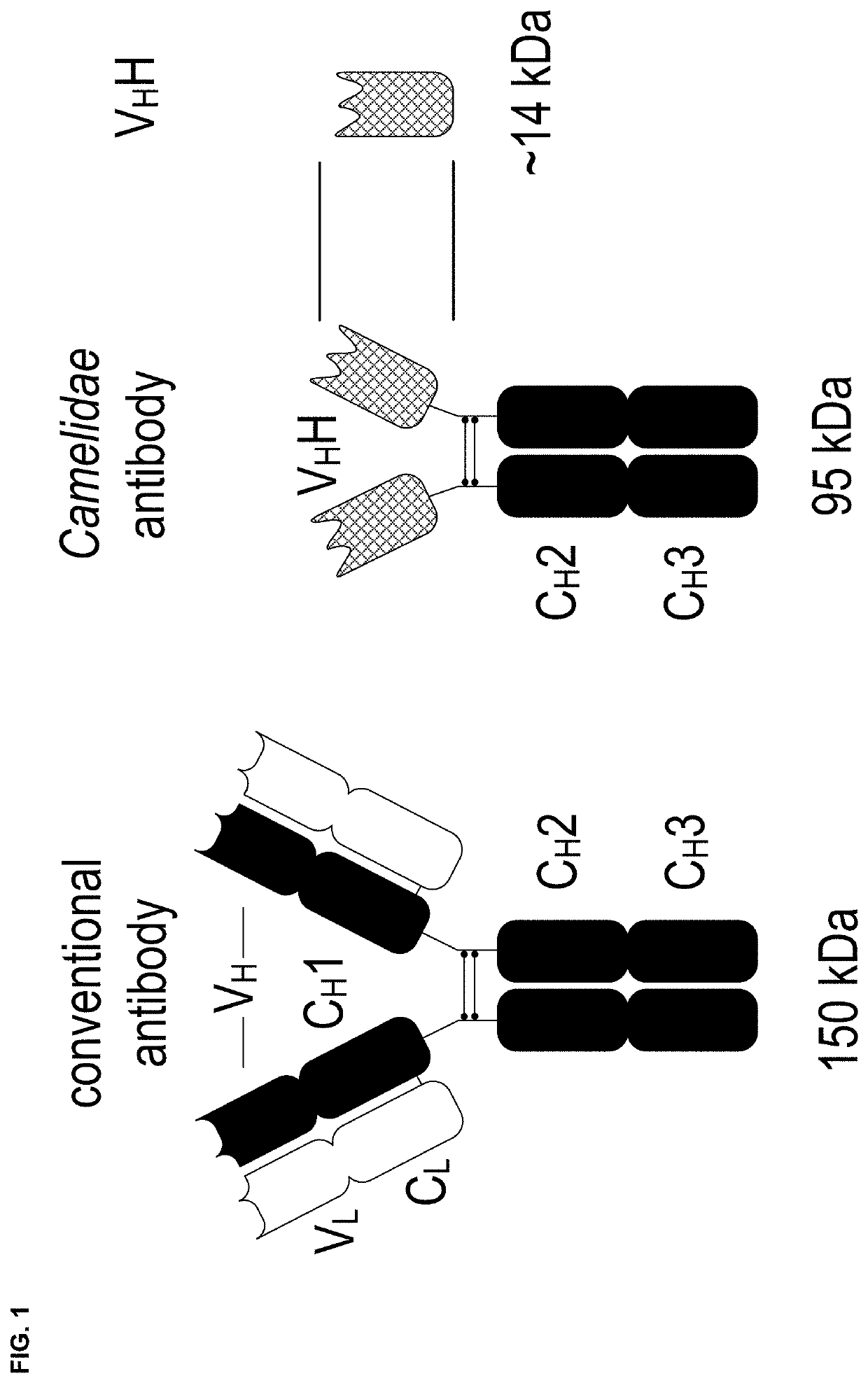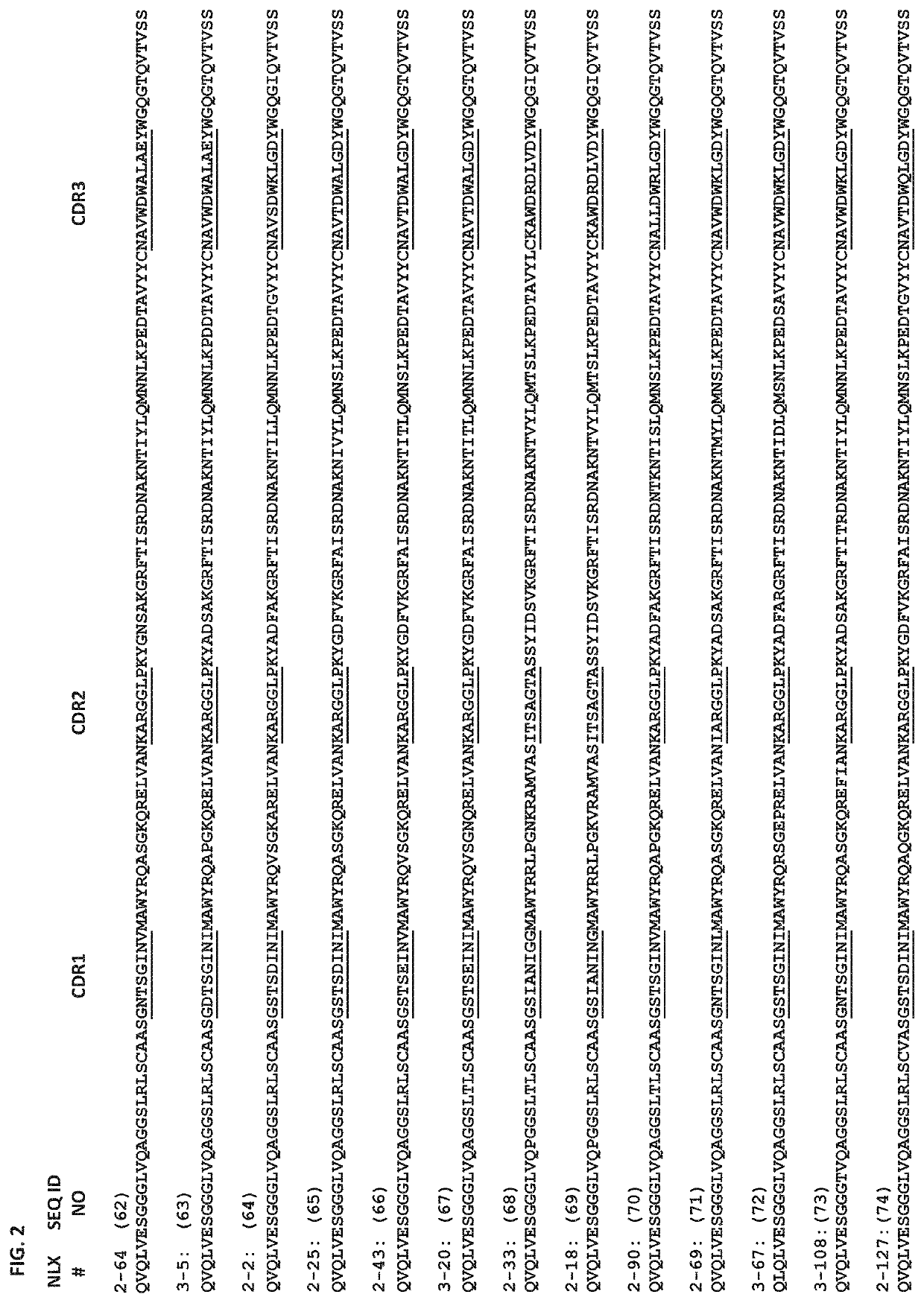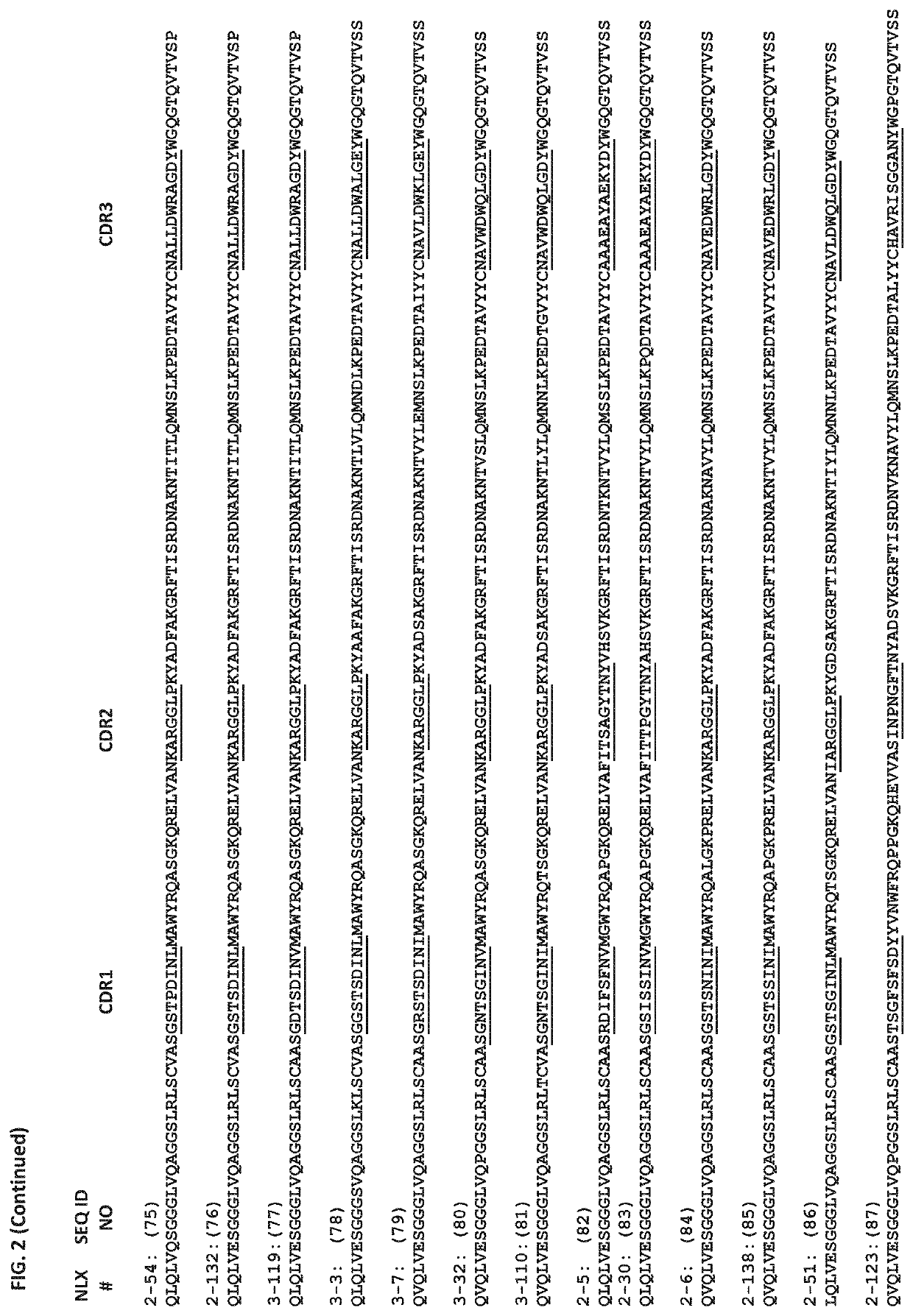Fusion protein of single domain antibody and procoagulant
a single-domain antibody and fusion protein technology, applied in the field of single-domain antibodies, can solve the problems of difficult characterization of this product, low accessibility of some relevant target epitopes, and relatively high production and purification costs
- Summary
- Abstract
- Description
- Claims
- Application Information
AI Technical Summary
Benefits of technology
Problems solved by technology
Method used
Image
Examples
example 1
-1 Amino Acid Sequence
[0058]The amino acid sequence of human TLT-1, an abundant platelet type I. transmembrane receptor with an immunoglobulin-like structure, is presented below; the underlined sequence is the signal sequence at the N-terminus of the protein and the highlighted sequence is the TLT-1 transmembrane domain. The extracellular domain of human ILT-1 that was used in generation of the anti-TLT-1 single domain antibodies (sdAbs) is a 147 amino acid protein between the end. of the signal sequence and the beginning of the transmembrane domain (underlined), UniProt sequence Q86YW5:
(SEQ ID NO: 118)MGLTLLLLLLLGLEGQGIVGSLPEVLQAPVGSSILVQCHYRLQDVKAQKVWCRFLPEGCQPLVSSAVDRRAPAGRRTFLTDLGGGLLQVEMVTLQEEDAGEYGCMVDGARGPQILHRVSLNILPPEEEEETHKIGSLAENAFSDPAGSANPLEPSQDEKSIPLIWGAVLLVGLLVAAVVLFAVMAKRKQGNRLGVCGRFLSSRVSGMNPSSVVHHVSDSGPAAELPLDVPHIRLDSPPSFDNTTYTSLPLDSPSGKPSLPAPSSLPPLPPKVLVCSKPVTYATVIFPGGNKGGGTSCGPAQNPPNNQTPSS
example 2
n of Anti-Human TLT41 Single Domain Antibodies (sdAbs)
[0059]In order to create coagulation co-factors targeting specific proteins on platelets, the inventors first identified sdAb antibodies specific for human TLT-1 by immunizing llamas five times with recombinant, soluble human TLT-1 protein and recovering the mRNAs coding for the heavy-chain antibody fragments from the B-cells of the immunized llamas. Messenger RNAs were converted into complementary DNA (cDNA) and cloned into a major coat protein gene (pIII) of bacteriophage M13 for expression. VHH domains of interest were selected by phage display methods (e.g., Kushwaha et al., 2014, J. Vis. Exp., volume 84, e50685; Saw and Song, 2019, Protein Cell, volume 10, pp. 787-807). The recovered sdAbs were selected from the pool of antibody fragments by binding repeatedly to immobilized human TLT-1 protein, as well as to unrelated proteins; repeated selection by this method identified only those that were true and high-affinity binders ...
example 8
o Activated Human and Mouse Platelets
[0069]The binding capability of sdAb 2-33TLT-His, sdAb sTF209-PC1-sdAb 2-33TLT-His and sTF209-PC1-sdAb 2-90TLT-His proteins to both human and mouse resting and activated platelets was tested by FACS assay. Citrated human (3 donors) and mouse (12 mice) whole blood were collected at room temperature (RT) and 10 μL of whole blood was used for each sample. To activate human platelets, ADP (5 and 20 μM) was used, and incubated with whole blood for 10 min at room temperature (RT). To activate mouse platelet, Type I fibrillary collagen (5 and 10 ug / ml) was used and incubated with whole blood for 10 min at room temperature (RT). Both ADP and collagen used were from Helena Laboratory, Beaumont Tex., Then, for each sample, 10 μg / ml of test article (i.e, sdAb 2-33TLT-His, sdAb 2-90TLT-His, sTF209-PC1-sdAb 2-33TLT-His or sTF209-PC1-sdAb 2-90TLT-His proteins) was added, followed by one or the other labeled antibodies, either APC-anti-CD41a antibody that was u...
PUM
| Property | Measurement | Unit |
|---|---|---|
| Fraction | aaaaa | aaaaa |
| Length | aaaaa | aaaaa |
Abstract
Description
Claims
Application Information
 Login to View More
Login to View More - R&D
- Intellectual Property
- Life Sciences
- Materials
- Tech Scout
- Unparalleled Data Quality
- Higher Quality Content
- 60% Fewer Hallucinations
Browse by: Latest US Patents, China's latest patents, Technical Efficacy Thesaurus, Application Domain, Technology Topic, Popular Technical Reports.
© 2025 PatSnap. All rights reserved.Legal|Privacy policy|Modern Slavery Act Transparency Statement|Sitemap|About US| Contact US: help@patsnap.com



